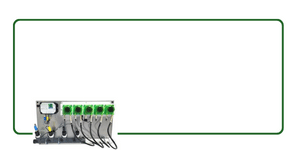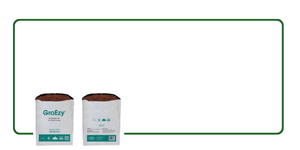
All objects with a temperature above absolute zero emit electromagnetic radiation. The wavelengths and intensity of radiation emitted are related to the temperature of the object. Terrestrial surfaces (e.g., soil, plant canopies, water, snow) emit radiation in the mid infrared portion of the electromagnetic spectrum (approximately 4-50 µm).
Infrared radiometers are sensors that measure infrared radiation, which is used to determine surface temperature without touching the surface (when using sensors that must be in contact with the surface, it can be difficult to maintain thermal equilibrium without altering surface temperature). Infrared radiometers are often called infrared thermometers because temperature is the desire quantity, even though the sensors detect radiation.
Apogee Instruments SI series infrared radiometers consist of a thermopile detector, germanium filter, precision thermistor (for detector reference temperature measurement), and signal processing circuitry mounted in an anodized aluminum housing, and a cable to connect the sensor to a measurement device. All radiometers also come with a radiation shield designed to minimize absorbed solar radiation, but still allowing natural ventilation. The radiation shield insulates the radiometer from rapid temperature changes and keeps the temperature of the radiometer closer to the target temperature. Sensors are potted solid with no internal air space and are designed for continuous temperature measurement of terrestrial surfaces in indoor and outdoor environments.
| Specifications | |
|---|---|
| Analog Model Output | 30 µV per C |
| Field of View | 32° horizontal half-angle, 13° vertical half-angle |
| Spectral Range | 8 to 14 µm |
| Operating Environment | -50 to 80 C; 0 to 100 % relative humidity (non-condensing) |
All objects with a temperature above absolute zero emit electromagnetic radiation. The wavelengths and intensity of radiation emitted are related to the temperature of the object. Terrestrial surfaces (e.g., soil, plant canopies, water, snow) emit radiation in the mid infrared portion of the electromagnetic spectrum (approximately 4-50 µm).
Infrared radiometers are sensors that measure infrared radiation, which is used to determine surface temperature without touching the surface (when using sensors that must be in contact with the surface, it can be difficult to maintain thermal equilibrium without altering surface temperature). Infrared radiometers are often called infrared thermometers because temperature is the desire quantity, even though the sensors detect radiation.
Apogee Instruments SI series infrared radiometers consist of a thermopile detector, germanium filter, precision thermistor (for detector reference temperature measurement), and signal processing circuitry mounted in an anodized aluminum housing, and a cable to connect the sensor to a measurement device. All radiometers also come with a radiation shield designed to minimize absorbed solar radiation, but still allowing natural ventilation. The radiation shield insulates the radiometer from rapid temperature changes and keeps the temperature of the radiometer closer to the target temperature. Sensors are potted solid with no internal air space and are designed for continuous temperature measurement of terrestrial surfaces in indoor and outdoor environments.
| Specifications | |
|---|---|
| Analog Model Output | 30 µV per C |
| Field of View | 32° horizontal half-angle, 13° vertical half-angle |
| Spectral Range | 8 to 14 µm |
| Operating Environment | -50 to 80 C; 0 to 100 % relative humidity (non-condensing) |







